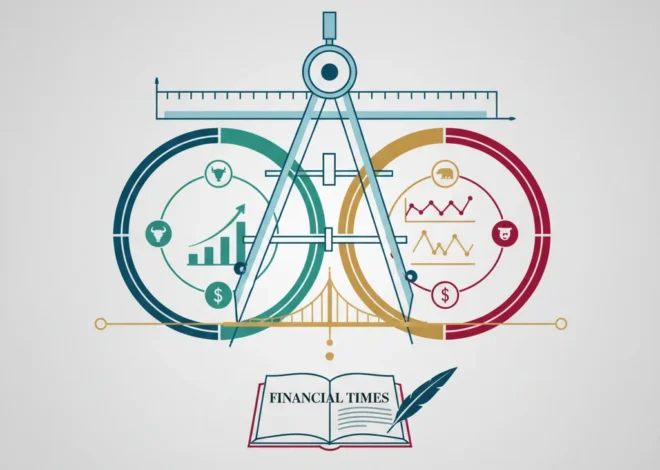
Beyond Wall Street: Why the Real Value in Today’s Stock Market Is Overseas
The American Value Trap: Why Buying “Cheap” US Stocks Hasn’t Paid Off
For decades, a cornerstone of sound investing has been the “value trade”—the simple, powerful idea of buying stocks that appear cheap relative to their earnings or book value. It’s the classic Warren Buffett approach: find good companies at a fair price. Yet, for the better part of the last decade, investors who followed this mantra in the U.S. stock market have been caught in a frustrating “value trap.” They bought what looked like bargains, only to watch them stagnate or fall further while a handful of high-flying growth stocks soared to unimaginable heights.
The primary culprit behind this market distortion is the sheer dominance of the “Magnificent Seven”—the cohort of U.S. tech giants that have come to define the S&P 500. Their meteoric rise has created a top-heavy market where the success of a few names masks underlying weakness in many other sectors. This concentration has made traditional value metrics less reliable in the U.S. As a result, many professional investors and market analysts are turning their gaze eastward, finding that the true value trade isn’t dead; it has simply moved abroad.
While the U.S. market grapples with high valuations and concentrated leadership, a different story is unfolding in Europe and Japan. In these regions, value investing is not only alive but thriving, delivering robust returns and presenting compelling opportunities for those willing to look beyond their home market. This shift represents one of the most significant undercurrents in global finance today, signaling a potential sea change in where the smart money will flow next.
Europe’s Quiet Renaissance: A New Frontier for Value
Often overlooked in favor of the dynamic U.S. market, European equities have been staging a quiet but powerful comeback. Unlike the U.S., where tech reigns supreme, Europe’s market leadership is broader and more grounded in the traditional economy. Sectors like banking, energy, and automotive have been delivering stellar performance, powered by solid fundamentals and attractive valuations.
European banks, for instance, have benefited from a higher interest rate environment, which has boosted their net interest margins. Energy giants have capitalized on disciplined capital allocation, and industrial and automotive companies are proving more resilient than many analysts predicted. The result is a market that offers both growth and value. According to analysis from the Financial Times, a simple strategy of buying the cheapest quintile of European stocks has consistently outperformed the broader market, a stark contrast to the experience in the United States.
To put this divergence into perspective, let’s compare the valuation metrics between the key markets.
| Region/Index | Forward Price-to-Earnings (P/E) Ratio | Key Performing Sectors |
|---|---|---|
| United States (S&P 500) | ~21x | Technology, Communication Services |
| Europe (Stoxx 600) | ~14x | Financials, Industrials, Energy |
| Japan (Topix) | ~15x | Automotive, Electronics, Financials |
Note: P/E ratios are approximate and fluctuate with market conditions.
The data clearly shows that, on a relative basis, European and Japanese markets offer a significant discount compared to their U.S. counterparts. This valuation gap, combined with strong corporate earnings, is the classic recipe for a successful value investing strategy.
The Rising Sun Shines on Shareholders: Japan’s Corporate Revolution
For decades, Japan was the poster child for value traps. Companies sat on massive piles of cash, boards were resistant to change, and shareholder returns were an afterthought. That picture is now changing dramatically, sparking renewed interest from global investors. A sweeping corporate governance revolution, actively encouraged by the Tokyo Stock Exchange, is forcing companies to unlock value for their shareholders.
The exchange has been pressuring companies trading below their book value to formulate and disclose specific plans to improve their capital efficiency. This has led to a surge in shareholder-friendly actions that were once rare in Japan, including:
- Record-breaking share buybacks.
- Increased dividend payouts.
- Unwinding of complex cross-shareholdings that suppressed shareholder influence.
Legendary investors like Warren Buffett have taken notice, making significant investments in Japanese trading houses, a move that has lent further credibility to the country’s turnaround story. This isn’t just a short-term trend; it’s a structural shift in the Japanese corporate mindset. The focus is moving from corporate stability at all costs to generating sustainable shareholder returns, a fundamental change that could fuel the Japanese market for years to come. This focus on shareholder value is a key factor in the positive performance of the Japanese stock market (source).
A Warning for Global Dealmakers: Navigating a Treacherous M&A Landscape
While opportunities abound in public markets, the landscape for large-scale mergers and acquisitions (M&A) tells a more cautious tale. The same macroeconomic forces shaping the stock market are creating significant headwinds for big dealmakers, both at home and abroad. Any company contemplating a major acquisition faces a gauntlet of challenges that didn’t exist just a few years ago.
The era of cheap money that fueled a decade-long M&A boom is over. Higher interest rates have dramatically increased the cost of financing deals, making it harder for acquirers to justify large premiums. This financial discipline is being enforced by a far more aggressive regulatory environment. Antitrust authorities in both the U.S. and Europe have signaled a much lower tolerance for deals that could reduce competition, leading to more blocked transactions and protracted legal battles. In fact, large-scale M&A activity has seen a notable slowdown as companies weigh these heightened risks (source).
Below are the key risks currently facing M&A professionals in today’s economy.
| Risk Factor | Description |
|---|---|
| Financing Costs | Elevated interest rates make debt-financed acquisitions significantly more expensive, pressuring deal models and ROI. |
| Regulatory Scrutiny | Antitrust agencies (e.g., FTC, DOJ, European Commission) are more skeptical of large mergers, increasing the risk of deals being blocked. |
| Geopolitical Uncertainty | Global tensions can disrupt cross-border deals, introduce new sanctions, and create unpredictable market conditions. |
| Valuation Mismatches | Sellers’ expectations may still be anchored in the low-rate era, creating a gap with what buyers are willing to pay in the current environment. |
This challenging environment means that while public market investors can find value, corporate executives must be exceptionally disciplined. The days of growth-at-any-cost acquisitions are gone, replaced by a new era where strategic fit and financial prudence are paramount.
Actionable Takeaways for the Modern Investor
The shifting global landscape presents both challenges and immense opportunities. For investors and business leaders, navigating this new world requires a fresh perspective. Here are some key takeaways:
- Diversify Geographically: The underperformance of the U.S. value strategy is a powerful reminder that no single market remains dominant forever. A well-diversified portfolio should include meaningful exposure to international markets like Europe and Japan to capture different growth cycles and valuation opportunities.
- Re-evaluate “Value”: True value investing isn’t just about buying statistically cheap assets. It’s about finding quality businesses at reasonable prices with catalysts for growth. In Japan, the catalyst is corporate reform. In Europe, it’s economic resilience and attractive yields.
- Understand the Macro Environment: Interest rates, inflation, and regulatory policies are no longer just background noise; they are primary drivers of market performance. Staying informed on these macroeconomic trends is crucial for both stock selection and strategic business decisions.
Whether you are managing a personal portfolio or guiding a multinational corporation, the message is clear: the most promising opportunities may lie beyond familiar horizons. The discipline of trading and investing requires a constant search for value, and right now, the map is pointing overseas.
Conclusion: The Global Search for Authentic Value
The narrative that has dominated the last decade of investing—unquestioned U.S. market supremacy driven by a handful of tech superstars—is beginning to show cracks. While the American growth story is far from over, the most compelling value proposition for investors is now emerging from the revitalized markets of Europe and the reformed corporate landscape of Japan. These regions offer a potent combination of lower valuations, solid fundamentals, and clear catalysts for future growth.
For investors willing to broaden their perspective and embrace global diversification, the rewards could be substantial. The real value trade is no longer a domestic affair; it is a global pursuit. By understanding the unique dynamics at play in each region, from European industrial strength to Japanese shareholder activism, investors can position themselves to capitalize on the next chapter of global economic growth.


